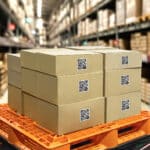At every step in the production process, many detailed records are generated. From raw material procurement to product selling, these records can be challenging for small to medium-sized businesses to track. However, an ERP system like SAP Business One has a feature that reduces the pain points of production. Thus, making the entire process more efficient and accurate: SAP Business One Bill of Materials (BoM).
How SAP Business One’s Bill of Materials Works
For most companies, producing a specific product begins with procuring the raw materials. Then, a production order that lists all of the necessary raw materials and components is created. It includes the steps needed to produce the product within a pre-defined timeframe. SAP Business One also generates a BoM against the materials required in the production order. This reflects a complete inventory of all the items and their costs to build a product. They are arranged in a hierarchical order of parent and child items.
Manual entry of these details can make the production process vulnerable to errors. You can increase accuracy and timeliness by creating BoMs using an integrated ERP system like SAP Business One. Depending on your production process needs, you can create 4 types of BoMs in SAP Business One.
1. Production Bill of Materials
For standard production orders and Materials Requirements Planning (MRP) runs, a Production Bill of Materials is required. The Production BoM lists the finished products as parent items. It then lists the components that complement the finished product as child items. You also have the option to turn components into finished products during the production process.
2. Sales Bill of Materials
The Sales Bill of Materials is used for sales documents when the parent item is listed as a sales item and not as an inventory item. After you have selected the parent item in the sales document, all the child items become sub-items. While you can edit the quantities of existing child items, you cannot delete or add child items to the package in the sales document. An example of the Sales BoM would a build-it-yourself furniture kit where the kit would be the parent item and the components inside the kit would be child items.
3. Assembly Bill of Materials
Much like the Sales Bill of Materials, the Assembly Bill of Materials represents a collection of items within a set that has a specific price, and the finished product is listed as a sales item. Unlike the Sales BoM, however, only the finished product is shown in the Assembly BoM. The components are not represented as child items.
4. Template Bill of Materials
The Template Bill of Materials is flexible and has no real restrictions since the parent and child items can be designated as any type of item. You can use this BoM for both production and sales documents with the parent item displayed on top and child items shown underneath. The adaptability of the Template BoM allows you to replace, update, or omit these items in order to make any necessary modifications within the documents.
Consultant is an SAP Gold Channel Partner who can help you learn more about the Bill of Materials functionality in SAP Business One and more.
Contact us today for the details.





